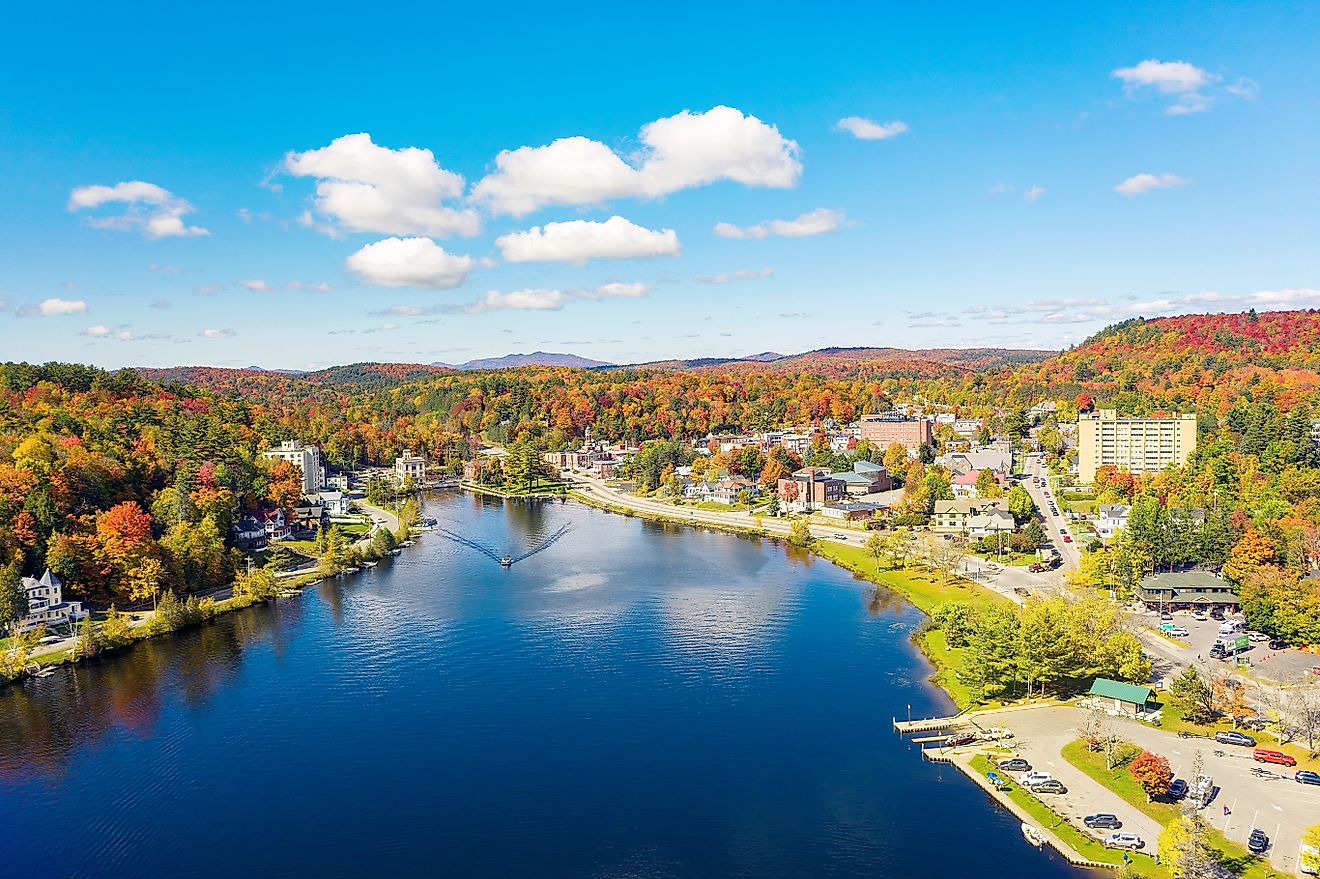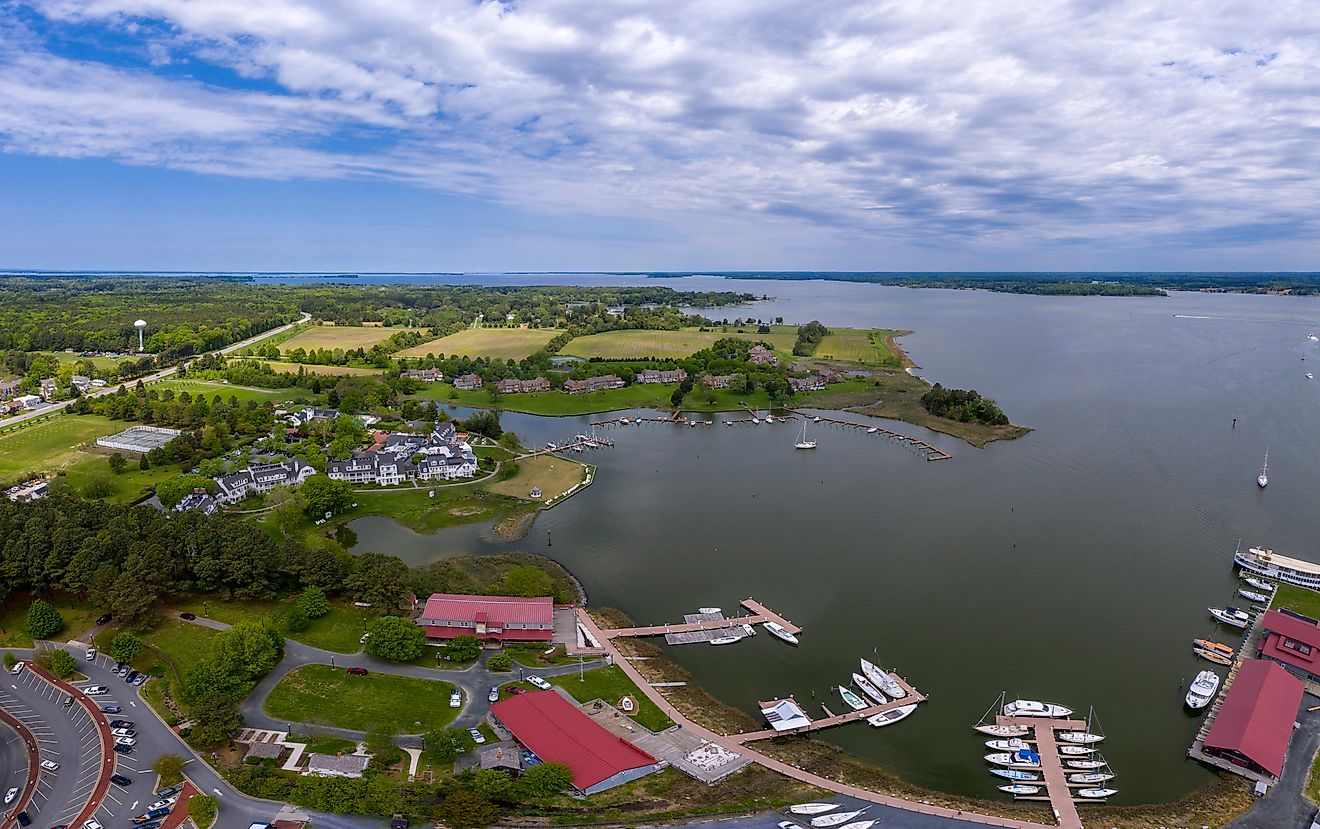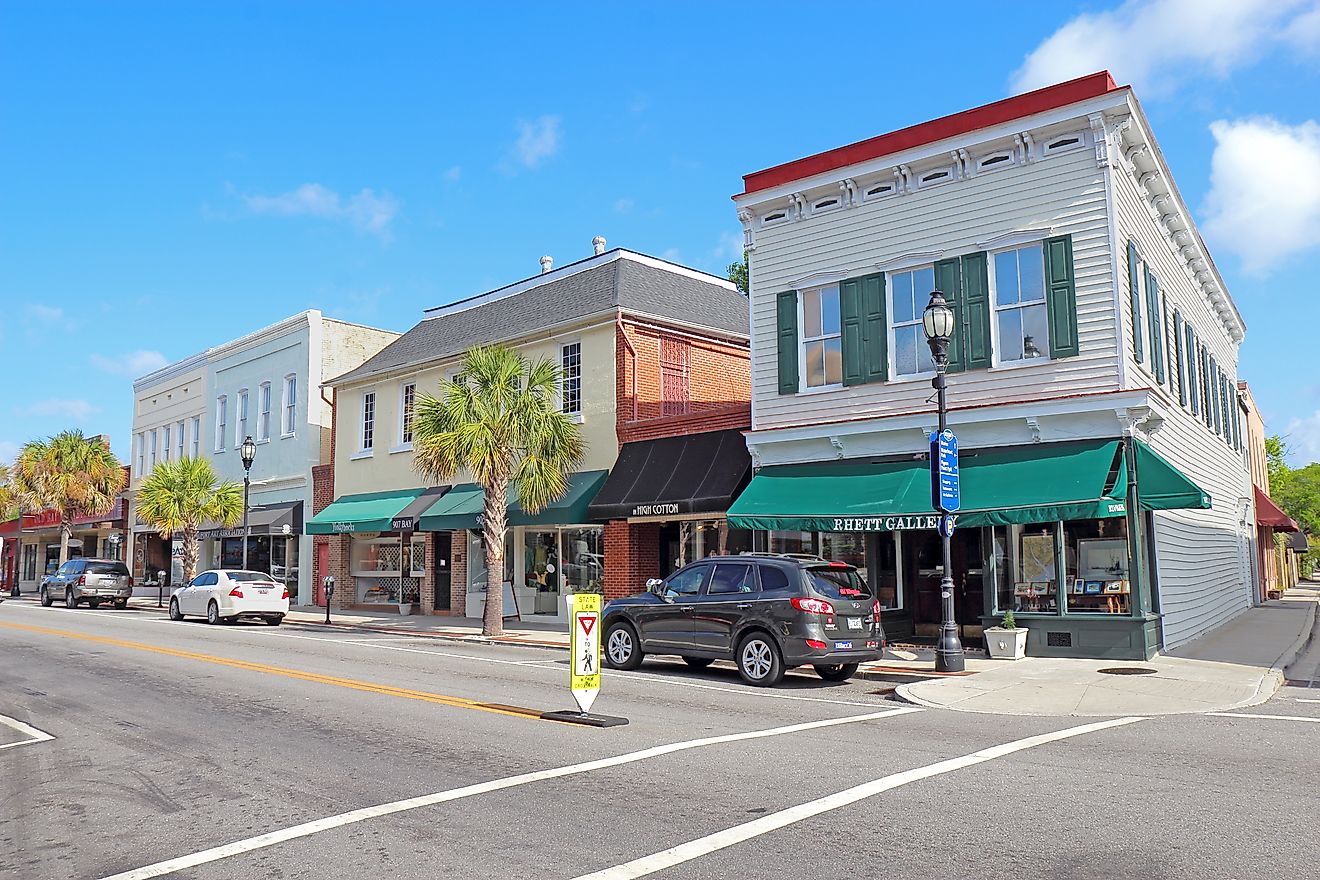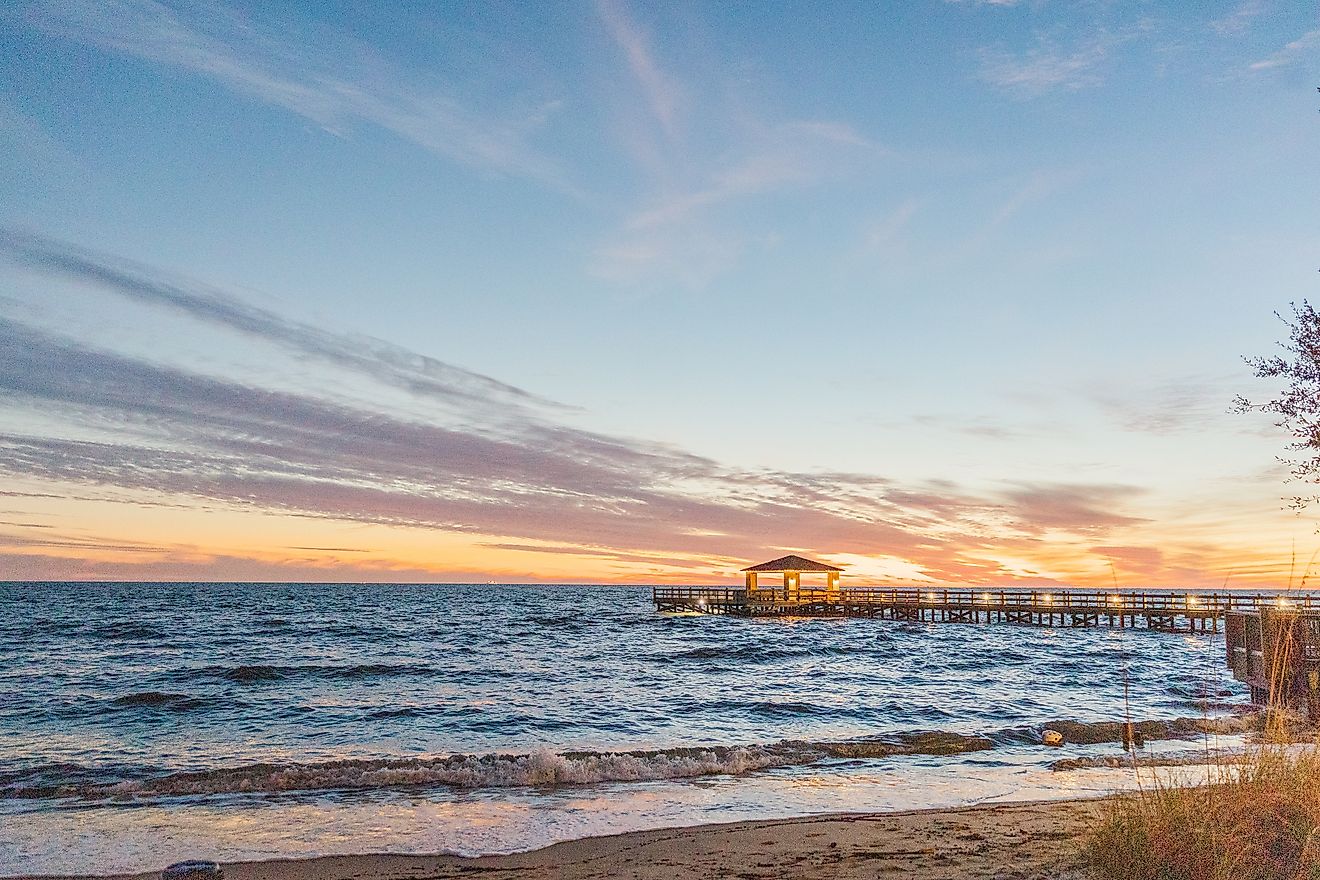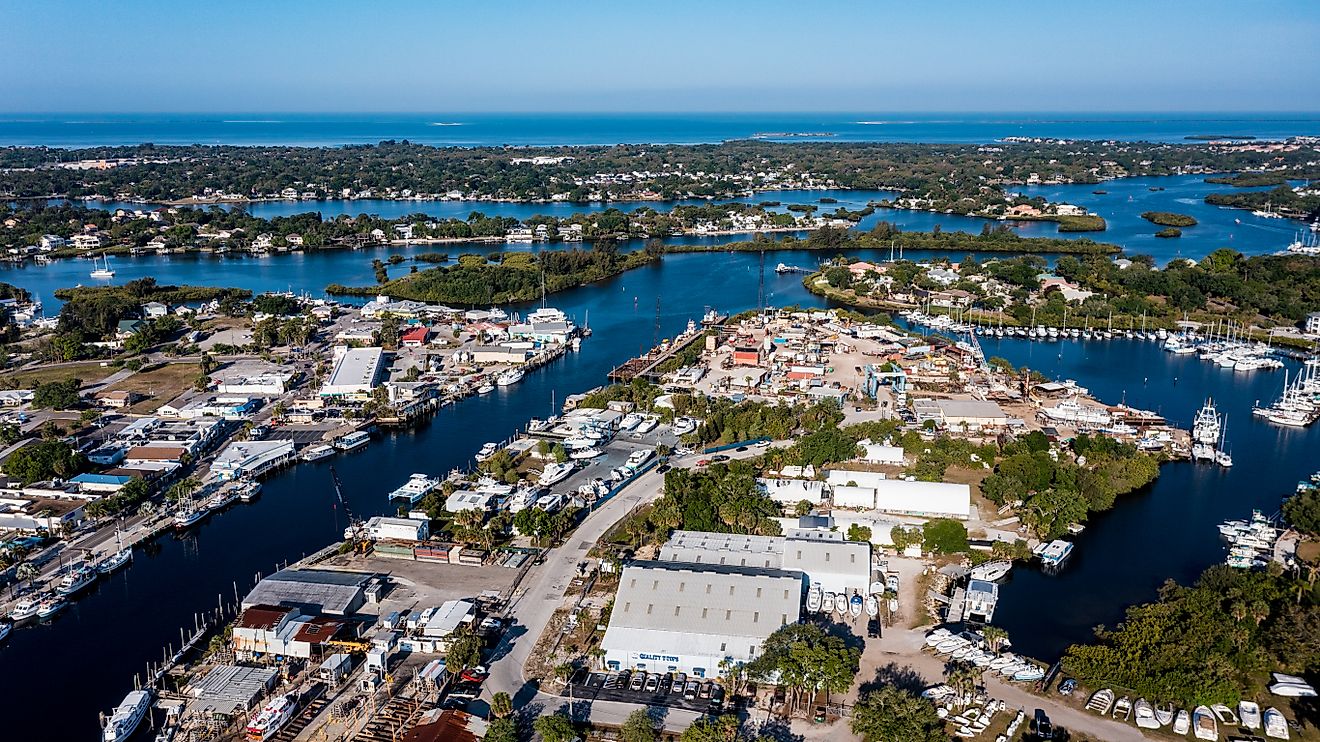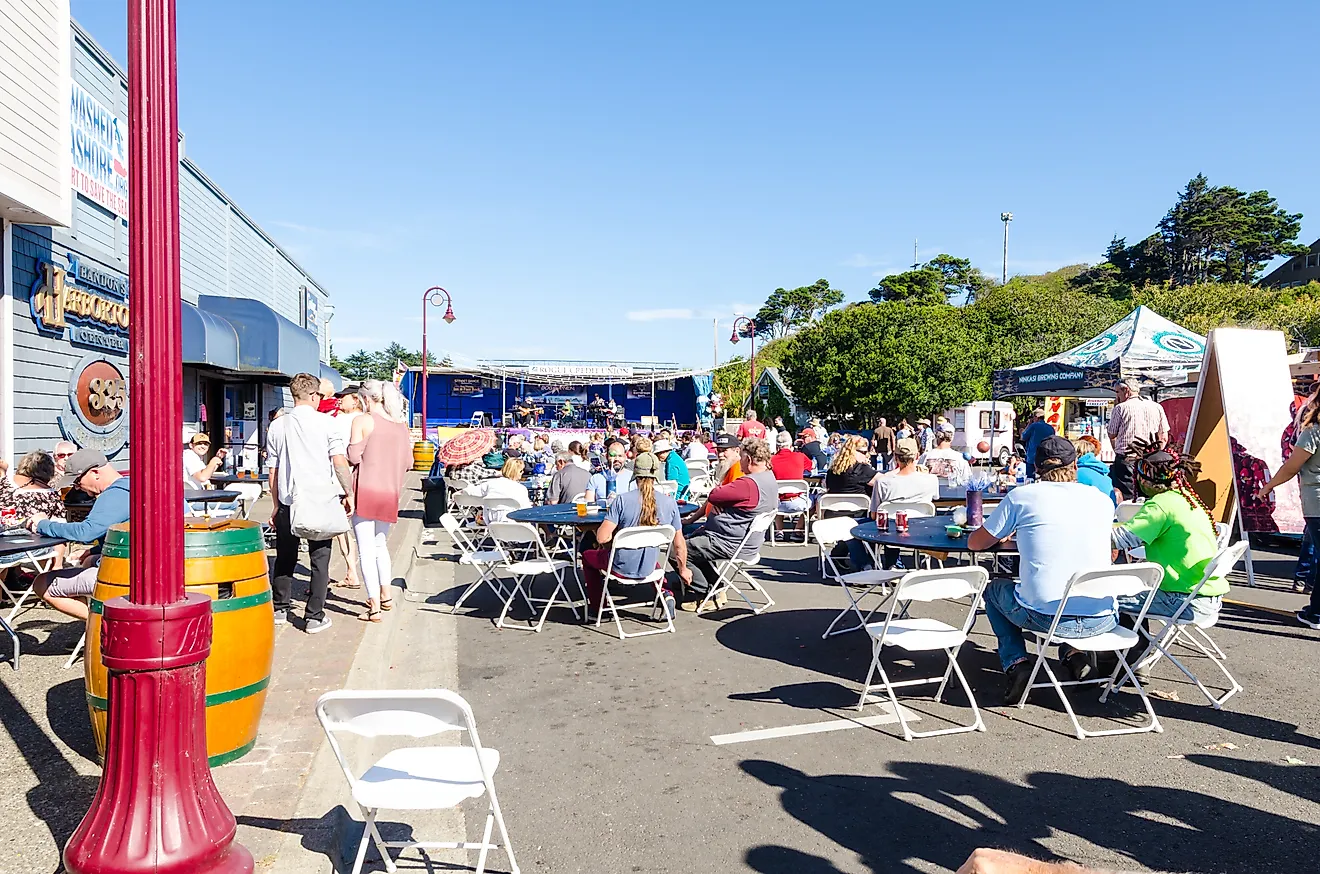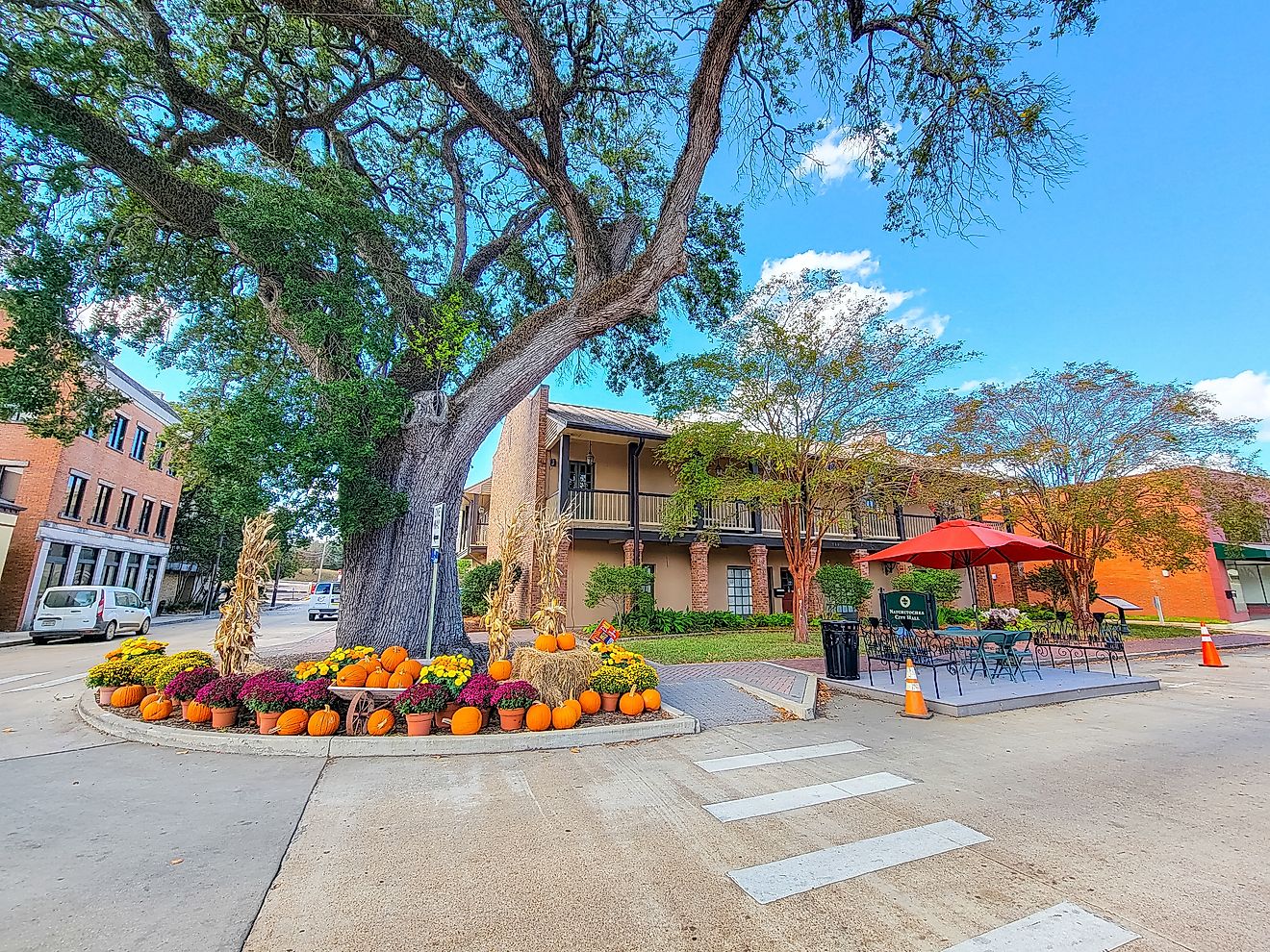
8 Charming Old Railroad Towns In New York
The State of New York operates one of the world's most extensive rapid transit systems, a feat largely due to New York City's hundreds of miles of track and thousands of stations that connect millions of people daily. Yet this modern achievement rests upon the steam engines and rail corridors that threaded through upstate communities generations before the five boroughs consolidated. When conflict erupted across northern territories, colonial and federal forces built forts and fortifications across contested ground, transforming strategic sites into cultural markers that endured long after hostilities ceased. Those same waterways and mountain passes that defined battlefield geography would later guide railroad engineers westward, creating transportation arteries that turned isolated hamlets into industrial powers. What follows chronicles eight such communities where rails forged the future while echoing battles long past, and today, residents maintain those silent stations and converted rail beds as cultural anchors.
Batavia

Three major railroad lines converged in Batavia from the mid-1800s through the 1960s. The New York Central, Lehigh Valley, and Erie railroads maintained constant train traffic through the city, rendering it a transportation hub crucial to Western New York's industrial development. Passenger and freight stations operated around the clock as Batavia's location made it an ideal transfer point for goods and travelers crossing the region. This reputation ultimately declined when the New York Central rerouted its mainline south of Batavia, ending decades of prosperity tied to the railroad industry. Now, only memories remain, and there indeed are certain places that convey much of them.

The Holland Land Office Museum operates in the same antiquated stone building, where Joseph Ellicott managed the sale of over three million acres that became Western New York. Inside, surveying instruments from Ellicott's original expeditions rest alongside military memorabilia spanning the Civil War through World War I, and a gibbet used for public executions. The Genesee County Courthouse, built from Onondaga limestone quarried in nearby LeRoy, anchors downtown with its Greek Revival columns and two-tiered cupola, housing the brass courthouse bell. The Erie Canal's construction brought additional commercial vitality to the region, with Joseph Ellicott serving as one of the original Canal Commissioners who championed the waterway's route through Western New York.
Ithaca
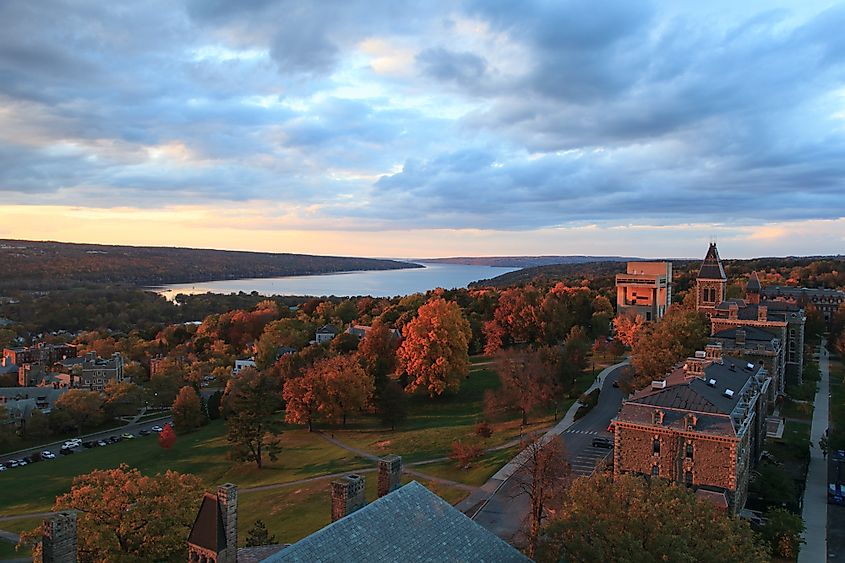
Just as the Ithaca of Homer served as the center of an ancient journey, this Finger Lakes counterpart once established itself as the center of its region’s rail-driven rise. Starting in the 1830s, the Ithaca & Owego Railroad (later part of the Cayuga & Susquehanna line) helped shape trade and transport beside Cayuga Lake. The first surge arrived when the line opened an early corridor through Upstate New York, and the next era followed suit as larger rail companies expanded freight and passenger travel. For decades, the Lehigh Valley Railroad guided both passengers and commercial movement along Taughannock Boulevard. The 1898 Lehigh Valley passenger station still seizes attention on that stretch with its brickwork, broad arches, and steady repurposing as a Chemung Canal Trust Company branch.
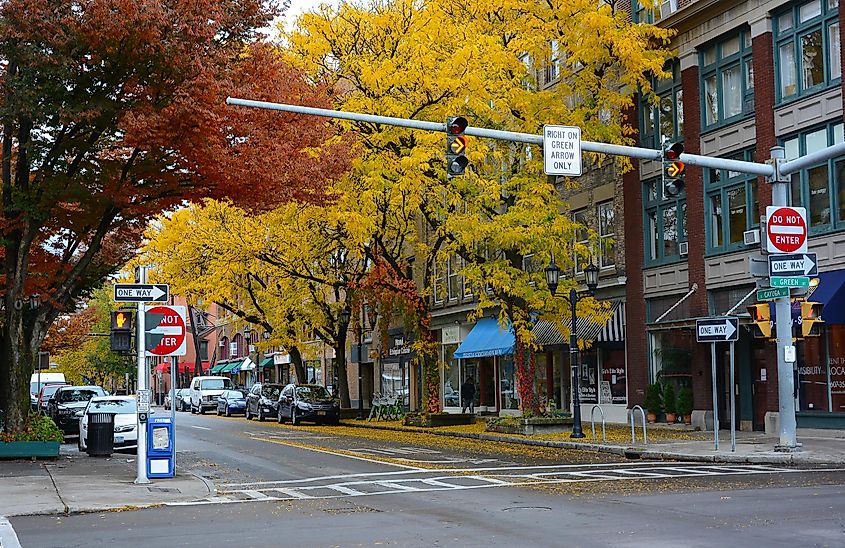
Passenger trains left the city following the advent of the 1960s as industrial transport tapered soon afterward. Nevertheless, the station and the rail bed near the Inlet preserve vivid hints of those years, and surely Ithaca radiates beyond rail history as well. The Museum of the Earth showcases fossils, prehistoric skeletons, and interactive paleontology exhibits that trace life as it existed millions of years ago, before the first tracks appeared on Earth. The Herbert F. Johnson Museum of Art gathers works from many continents within its sharply angled galleries. Elsewhere, the Buttermilk Falls State Park rounds out the day with plunge pools, stair-step cascades, and shaded paths that meet the lake breeze near sunset.
Kingston

Kingston emerged as New York's first capital in 1777, only for British forces to burn the city down. The residents bounced back resoundingly and rebuilt the settlement, a move that cemented it as a major 19th-century shipping and industrial force. The Rondout-West Strand Historic District curves along Rondout Creek, where the Rondout and Oswego Railroad ran passengers and commodities directly to water docks throughout the 1860s onward. This facilitated trade connections to vessels and canal systems before the line became the Ulster & Delaware Railroad. The Old Dutch Church, formally known as the First Reformed Dutch Church since the 1650s, boasts its Renaissance Revival facade on Wall Street within the Stockade District, the city's oldest continuously inhabited area.
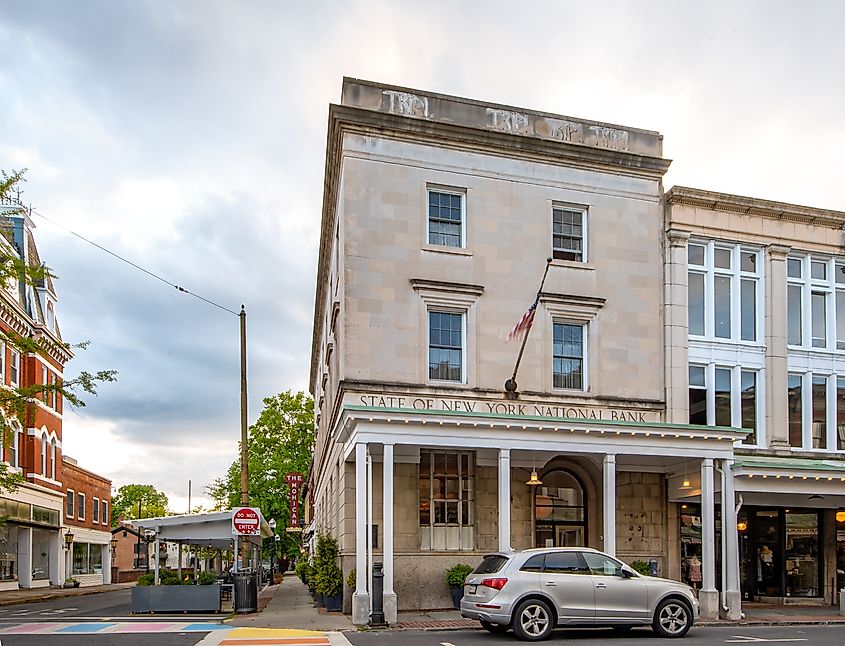
The Senate House State Historic Site, on Fair Street in the Stockade, commemorates how, in 1777, Kingston hosted the first New York State Senate right after the state’s first constitution was adopted. Volunteer Firemen's Hall takes care of the Wiltwyck Fire Station, safeguarding artifacts and honoring local heroes who served Ulster County for generations. Hasbrouck Park, Kingston's first official downtown park, reclaims land formerly mined for cement operations. At the same time, the annual O+ Festival energizes downtown through art installations, music performances, and community wellness programming that strengthen the city's cultural momentum.
Lake George
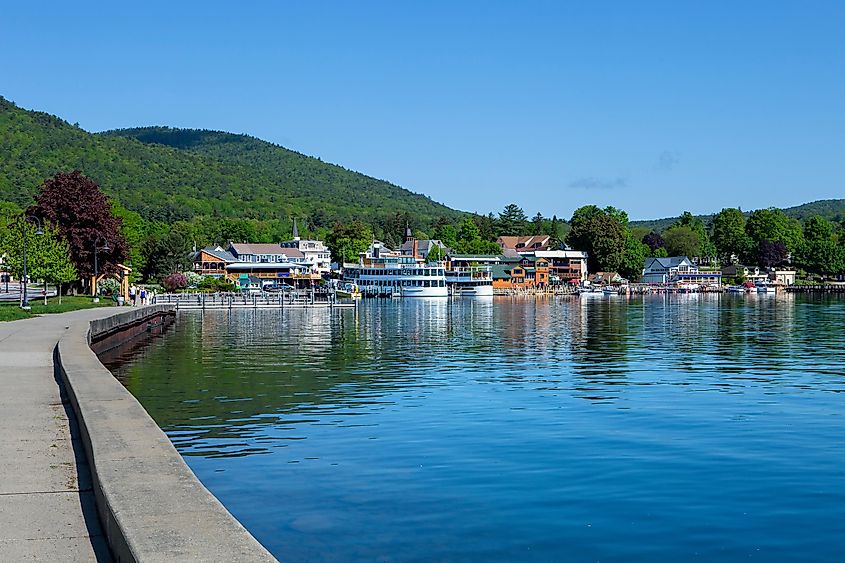
Lake George brings its long timeline into full view through museums, fort grounds, and preserved railroad landmarks that keep older eras within reach. Fort William Henry Museum & Restoration commands the southern tip of the namesake lake, its exhibits recounting the days when British troops and French forces clashed during the French and Indian War. Cannons, earthworks, and guided walk-throughs immortalize the past when this stronghold proved crucial in early North American battles. A short walk south reaches the Lake George Battlefield Park Historic District, where interpretive panels, monuments, plaques, and foundations outline troop encampments. The House of Frankenstein Wax Museum adds its own gothic aura with dim corridors, themed chambers, and horror tableaux that lean into the darker corners of storytelling.

The Delaware and Hudson Passenger Station seized the spotlight in this old railroad town during the first half of the 20th century, thanks to its Mediterranean Revival roofline and long stretches of passenger movement that lasted until 1958. Today, its recognition on the National Register affirms its value for railroad history buffs. The Lake George Steamboat Company still carries riders across the oligotrophic waters, echoing the rhythm of earlier steam travel. Its steel-hulled excursion steamboat, the Mohican II, along with the Old Warren County Courthouse Complex, broadens the heritage thread with lake cruises and civic exhibits. As evident by the presence of the eponymous lake, nature fills the picture through the backdrop of the Great Appalachian Valley and the Adirondack Mountains. Dunham Bay Marsh’s movements entice birdwatchers toward reeds and quiet channels, while the Peace Obelisk commemorates the Battle of Diamond Island with stonework that acknowledges the region’s wartime past.
Hunter
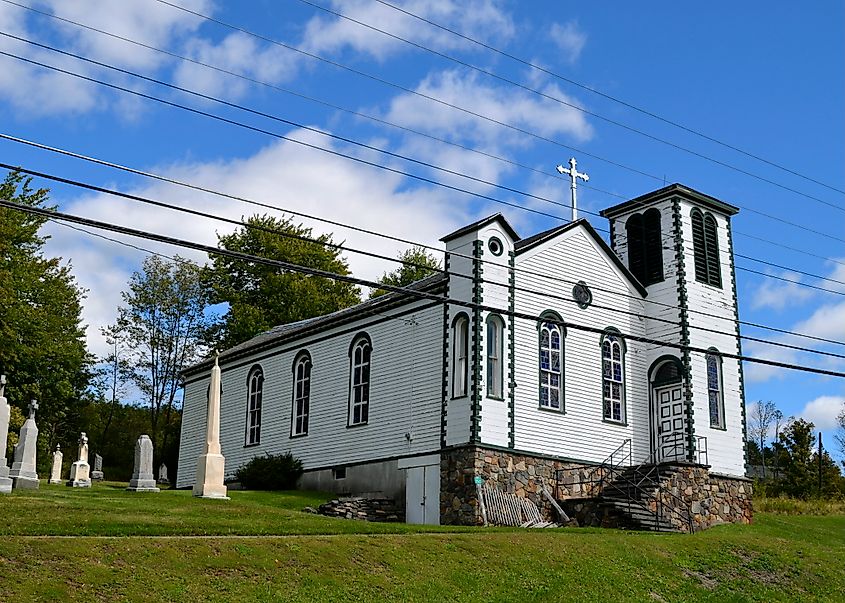
Mary of the Mountain Church as seen from HWY 23A. Hunter, NY. Wikimedia Commons.
Hunter rises along the Catskill Mountains, where full winters and clear summers set the tone for steady recreation. Hunter Mountain Ski Area presents newcomers and seasoned skiers with a wide hill system featuring lessons, rental shops, and long descents that run through broad tree-lined areas. Warmer months shift that energy toward high-altitude viewpoints as the Hunter Scenic Skyride carries people in Kaatskill Flyer detachable chairlifts to upper platforms that appear far across valleys and wooded ridges. Scribner’s Catskill Lodge solidifies this hillside allure with fire pits crackling at dusk, broad windows facing wooded rises, and outdoor soaking tubs that extend quiet hours after a morning outside.

Small hamlets around Hunter continue to reflect their heritage from the rail era. Haines Falls and Tannersville both arose along routes once owned by the Ulster & Delaware Railroad. From the late 1800s into the early 1900s, the narrow-gauge Catskill & Tannersville Railway also competed with U&D’s branch line, bringing guests to Tannersville station. At the same time, nearby Kaaterskill Junction station and the Haines Falls depot drew travelers bound for mountain resorts and trailheads. The second Haines Falls station still stands, having undergone careful restoration, and now frames the entrance to the Kaaterskill Rail Trail. Short walks reveal track remnants, bridge abutments, and route markers that help people trace how rail travel once shaped these ridgelines.
Peekskill

The Hudson River Valley guides hikers through Peekskill’s rich vegetation and aquatic beauty, manifesting through the river and New Croton Reservoir southeast. The countryside is indeed rewarding for those who prefer quieter water access and long perimeter walks that trace wooded banks and stonework tied to the old Croton system. The nearby sections of Hudson Highlands State Park Preserve around Annsville Creek unfold into trails where bald eagles glide over the river corridor, and great blue herons pass through the marsh pockets. But beyond Peekskill’s soothing sights, railroading has left an even deeper imprint downtown.

While Peekskill station still carries Metro-North riders along the Hudson Line, it's the original 1850s freight and passenger depot one block inland where history enthusiasts feel nudged toward. On February 19, 1861, President-elect Abraham Lincoln addressed local crowds during his inaugural journey. The building now forms the core of the Lincoln Depot Museum, which arranges Civil War artifacts, photographs, and interpretive material about the visit and the depot’s years of service. The Peekskill Museum also expands that timeline with rotating local collections inside its Victorian-era home. Elsewhere, Hudson Valley MOCA, a contemporary arts venue, features installations, sculptures, and large-format works from regional and international artists.
Briarcliff Manor
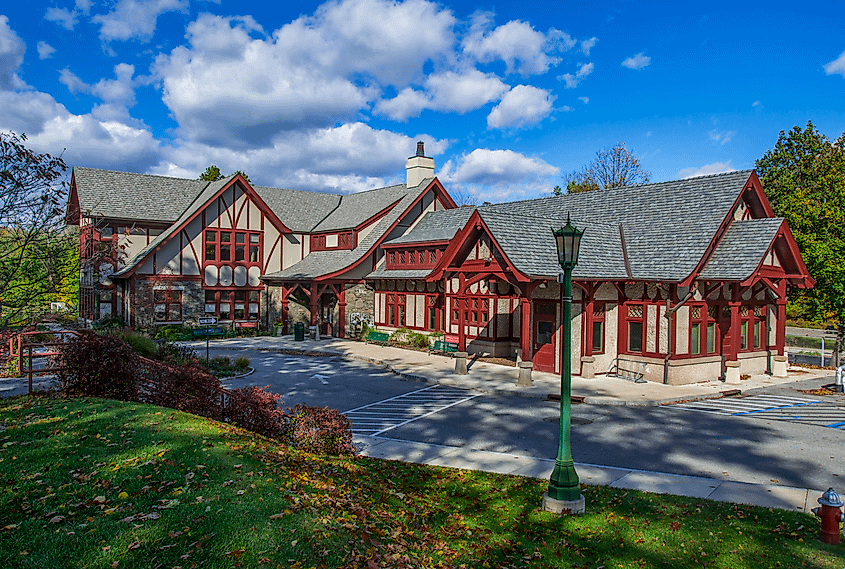
The Briarcliff Manor Public Library, October 23, 2016. Wikimedia Commons.
Less than 25 miles north of New Rochelle, the Briarcliff Manor Public Library functions as both a center of information and a monument to the namesake village’s railroad past. In 1959, the library acquired the former Briarcliff Manor station of the New York and Putnam Railroad, a Tudor Revival structure built in 1906, when the latter was commissioned to replace a smaller depot. Information continues to travel through quiet halls and thousands of books traditionally, while the building's original purpose persists through the rail trail directly behind it. A vintage village clock tower and a historic municipal building downtown project a consistent ambiance, channeling the refined spirit of an earlier time.
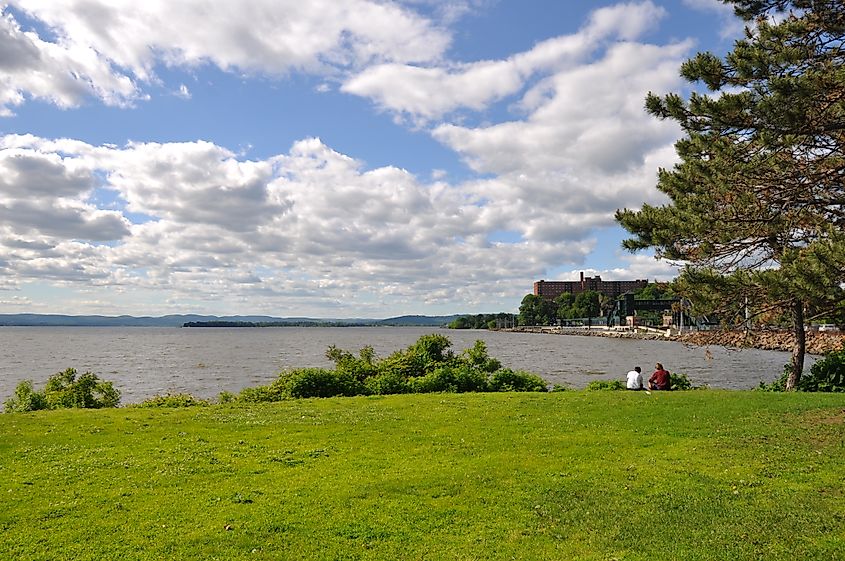
View of the Scarborough train station from Scarborough Park. Unedited, taken today, June 6, 2014. Wikimedia Commons.
At Law Memorial Park, families will find a large main pool, a circular wading pool, four tennis courts, paved trails, and playgrounds that span the entire grounds. The Old Croton Aqueduct State Historic Park passes through Westchester County for more than 26 miles along the 1840s underground aqueduct, with ventilators and weir chambers visible near Briarcliff Manor. The North County Trailway, part of the statewide Empire State Trail, follows 22 miles from Eastview to Baldwin Place along the former rail bed. It cuts through woods, apple orchards, and reservoir crossings before linking to extended routes that eventually reach from the Bronx north to Brewster, creating one of the longest continuous non-motorized pathways in New York.
Olive
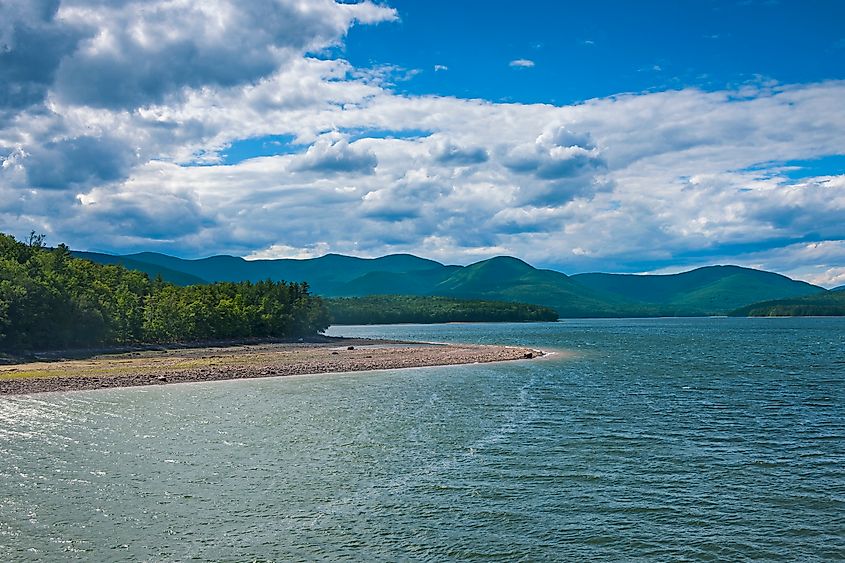
Olive rises within the broader Catskill Park area, where the Ashokan Reservoir mesmerizes visitors with its shoreline and trailheads surrounded by the numerous hamlets that constitute the town. The reservoir is also crucial in supplying New York City’s water, contributing roughly 40 percent of the city’s daily drinking water, according to official DEP sources. Cold Brook station, constructed circa 1915, remains in the Boiceville hamlet as a tangible reminder of the Ulster and Delaware Railroad, which carried rail traffic until the 1970s. If it is hiking you seek in Olive, after mentally diving into the railcars, the Ashokan Quarry Trail ranges before hikers seeking modest elevation changes with panoramic water views.
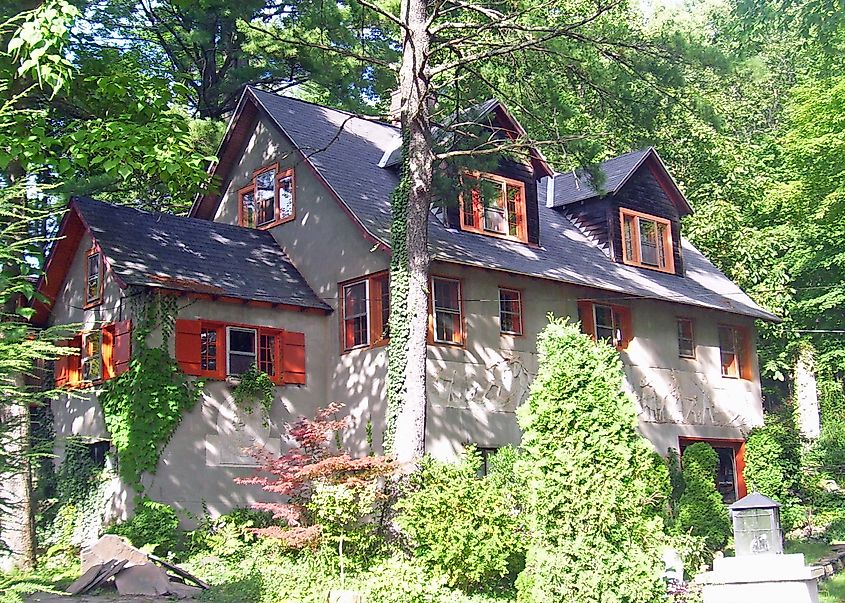
Embellishing your strolls is Emile Brunel Studio, just off the NY 28 state highway, in Boiceville, Town of Olive, where Brunel's 1920s-era outdoor artworks and Native American-inspired totems remain publicly accessible. The Ashokan Field Campus Historic District serves as an education and retreat center, preserving facilities that have accommodated educational programs since 1967. These rail-era remainders and outdoor recreation options frame why Olive merits inclusion in an exploration of New York's historic rail towns.
Long before the five boroughs of New York City conceived their metropolis, New York needed rails threading through the Appalachian barrier to tie upstate communities with western regions and Pennsylvania beyond. The Ulster and Delaware Railroad carried Olive's residents and goods through mountain passes while Kingston's Rondout and Oswego line connected creek docks to canal systems. Batavia's three converging lines made it an industrial powerhouse until the rerouting severed its importance overnight. Peekskill immortalized Lincoln's brief platform address through its depot museum, keeping that February morning alive for new generations. The Emperor State's railroad legacy endures not through active tracks, but through communities that refuse to let history fade into quiet forests and empty platforms.


